Have you ever planted something in the “perfect spot,” only to watch it get leggy, wilt, or burn out completely? Most of the time, the problem is not realizing how much (or how little) sun your garden actually gets – and it can sneak up on you.
Sunlight patterns shift more than most people realize. They change with the seasons, and also over the years as trees grow, new structures go up, and the landscape evolves.
The good news? Measuring sun exposure is simple – and it helps you choose the right plants that will thrive in your garden. In this post, I’ll show you exactly how to figure it out, step by step.
Simple Steps to Track Sunlight in Your Garden
To see how much exposure each part of your garden gets, all you need is a clear, sunny day and a little time.
This simple method will show you the patterns from sunrise to sunset so you’ll easily be able to choose the right plants for each area.
What You’ll Need:
- Paper
- Pen
- Timer to remind you to check each hour (optional)
Instructions:
Step 1: Draw your chart – Start by creating a simple table. Draw one column for each hour of the day (e.g. 7AM, 8AM, 9AM…) and one row for each area you want to track.
Step 2: Record the exposure at sunrise – As soon as the sun rises, take a walk through your garden. For each area on your chart, write down how much light it’s getting:
- Full sun (direct, unfiltered light)
- Partial (a mix of sun and shade)
- Dappled (like light through trees)
- Shade (no direct sun at all)
Step 3: Check every hour – Set a reminder to check each garden area every hour and write down the sun exposure at that time. Keep this up until sunset. At the end of the day, you’ll have a chart that looks similar to the photo below.

Step 4: Calculate the total – At the end of the day, tally up how many hours of direct sunlight each area got. Then use this guide to determine the exposure:
- 6+ hours = Full Sun
- 3–6 hours = Partial Sun / Partial Shade
- Less than 3 hours = Shade / Full Shade
- Filtered light all day = Dappled Shade
Related Post: Perennials vs Annuals: What’s The Difference?
Smart Shortcuts & Pro Tips:
- If your garden is large, divide it into smaller sections and track them separately. Sunlight can vary a lot, even within just a few feet.
- Want to go big? Use this method to map your entire front or backyard, or even your whole property.
- Short on time? Snap a photo of each area every hour instead of writing it down.
- For a techy shortcut, try using a garden light meter or set up a time lapse camera to capture the sun patterns automatically.
How to Choose the Right Plants Based on Sun Exposure
Once you know how much sun each part of your garden gets, picking the right plants is easy – just check the tag.
Most plant labels will tell you exactly what kind of sunlight they need. When you match the plant to the light, you’ll set it up to thrive.
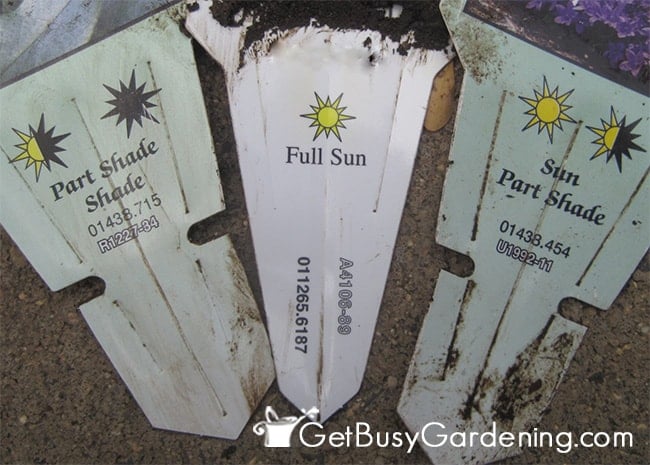
Measure Again Throughout The Year
Remember, sunlight isn’t static – it constantly shifts throughout the year. A garden area that’s shady in spring might get blasted in midsummer when the sun is higher in the sky (and hotter). That’s when shade-loving plants can start to burn out.
Trees also play a big role. A bed that’s full sun in early spring can quickly turn into partial or full shade once the leaves fill in – which will make the sun-lovers grow leggy.
That’s why it’s smart to check the sun exposure a few times a year—especially in spring, midsummer, and fall. You’ll get a clearer picture of how the light moves through your garden all season long.
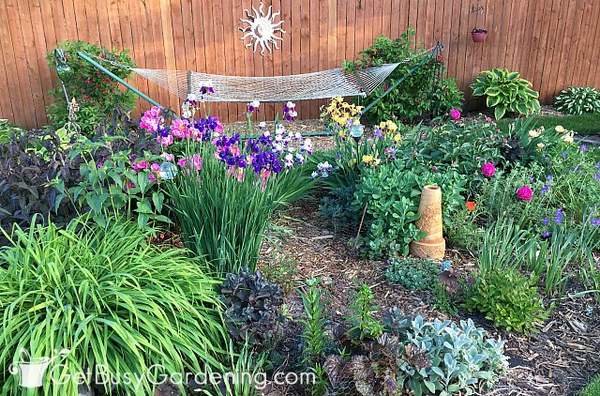
Once you know how to measure sunlight in your garden, picking the right plants becomes a breeze. Just remember to check it a few times a year so you understand the seasonal patterns – and re-check every few years as your landscape changes.
More Information About Garden Planning
- Perennials Made Easy! How To Create Amazing Gardens
- How To Design A Front Yard Foundation Planting
- Annual Flower Garden Design For Beginners
Share your tips for how to measure sun exposure in your garden in the comments section below.
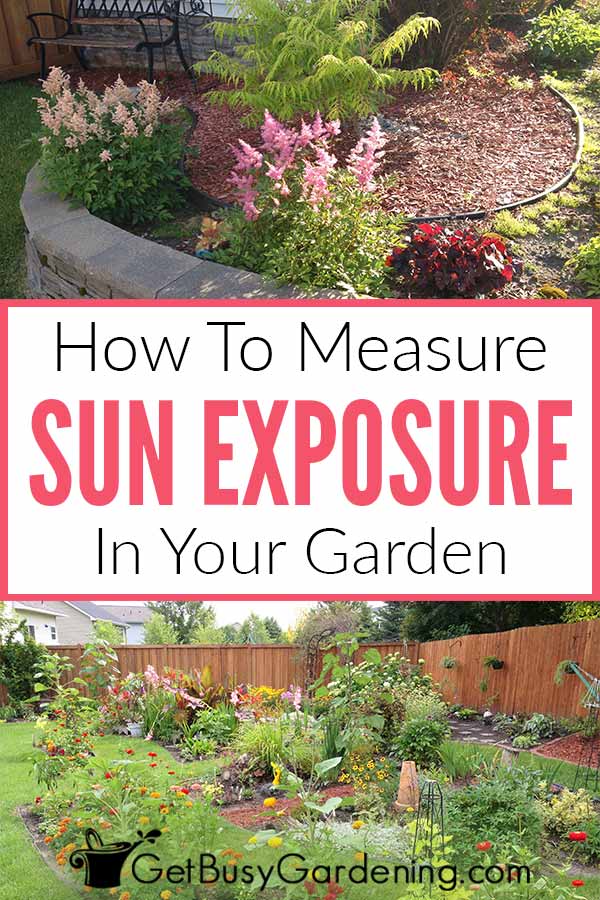

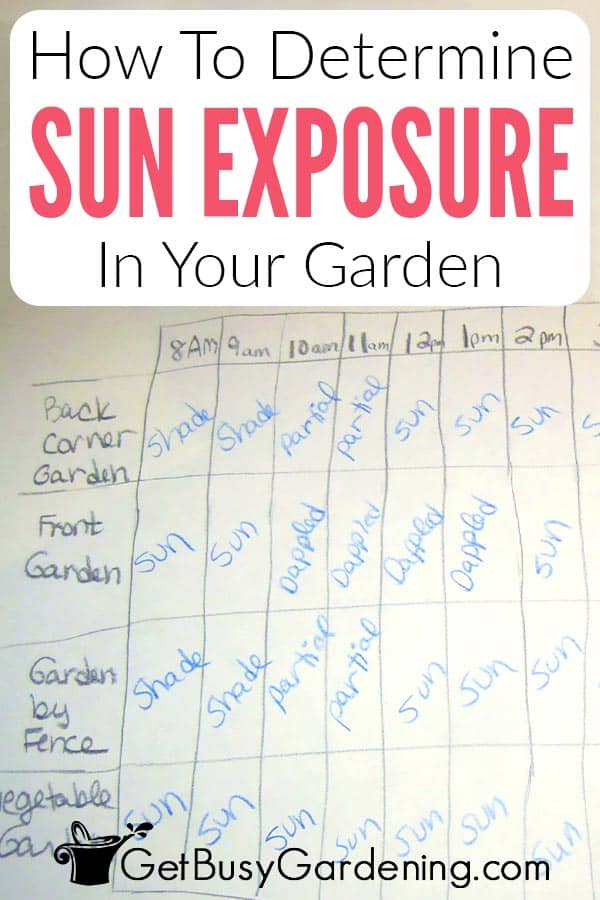
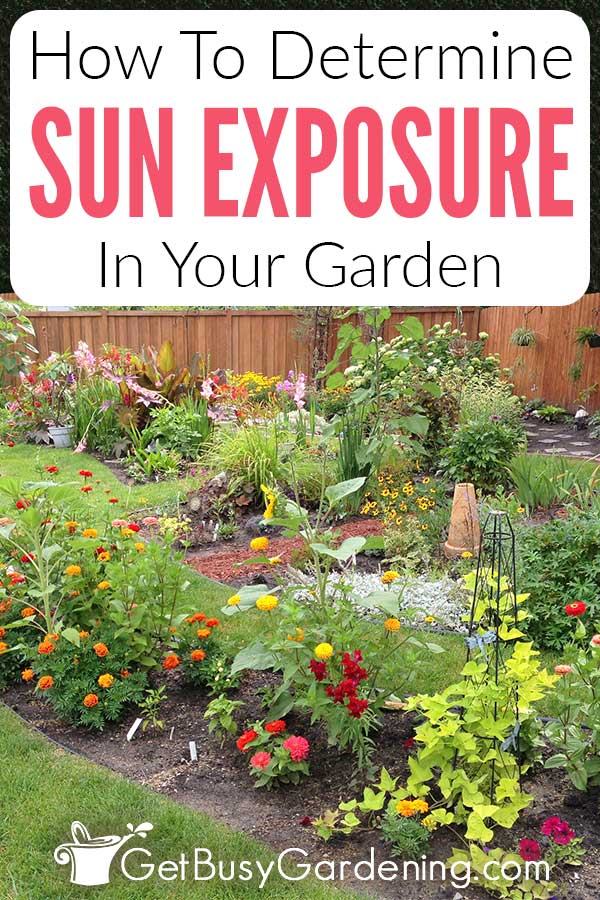
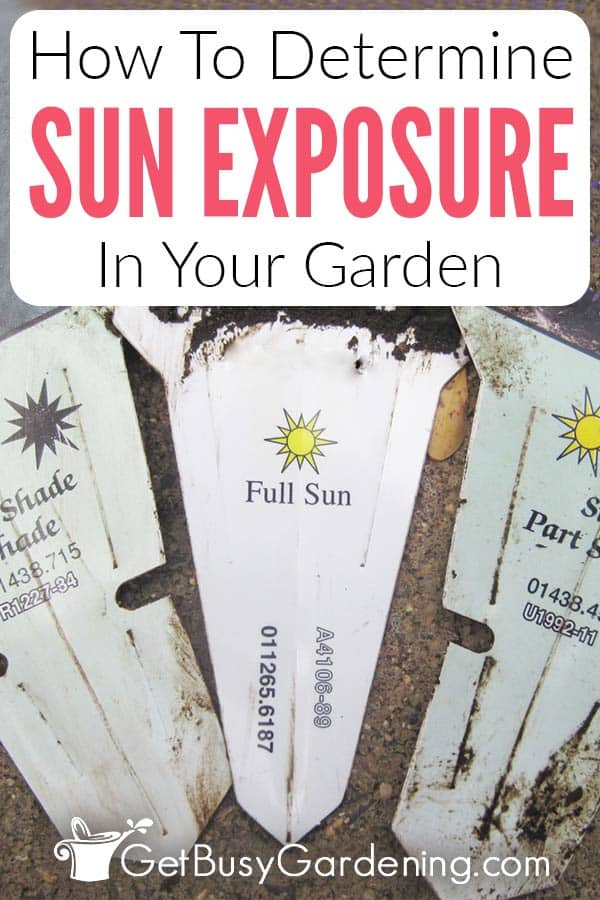




Leave a Reply